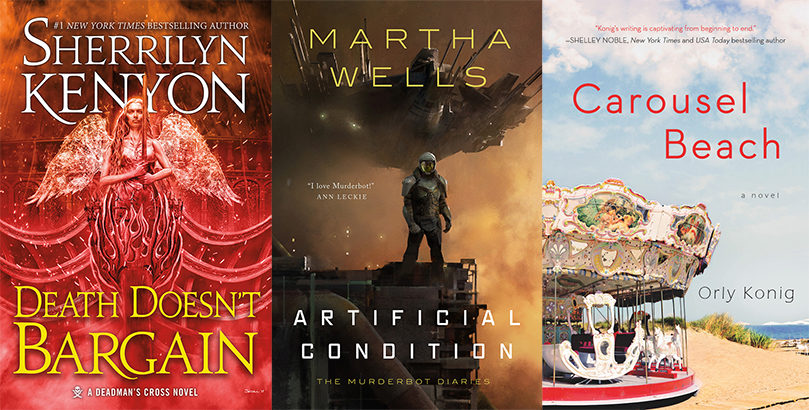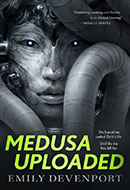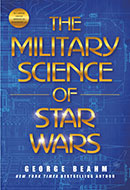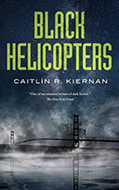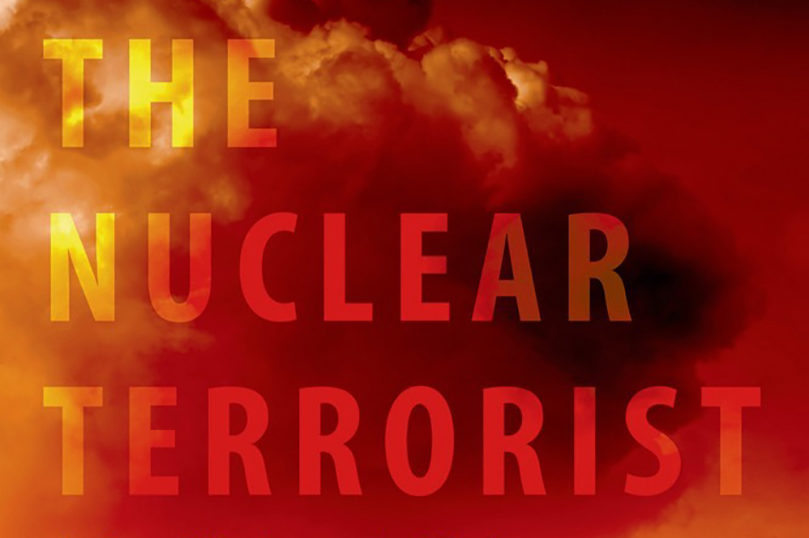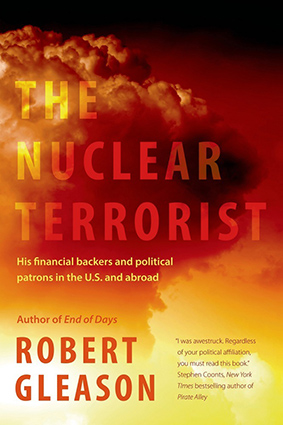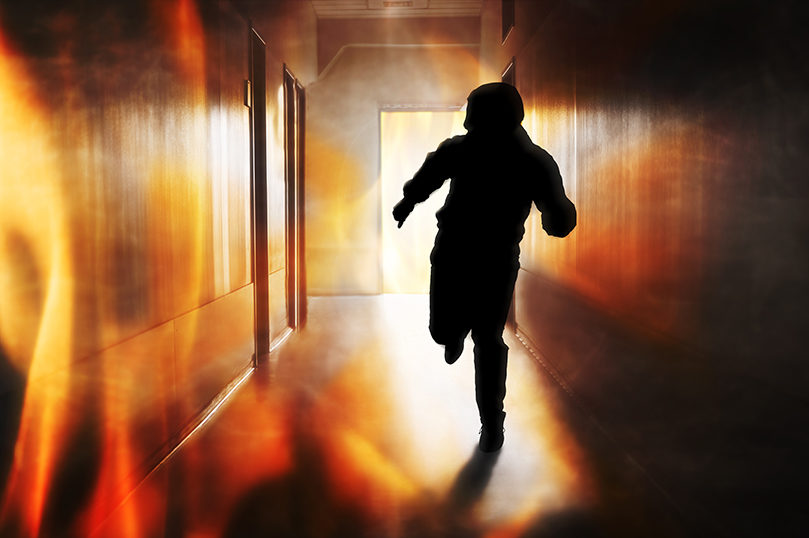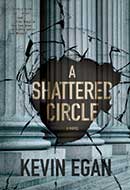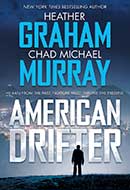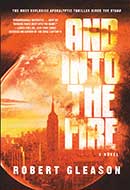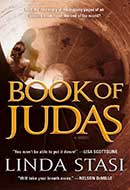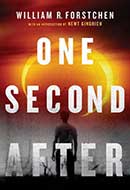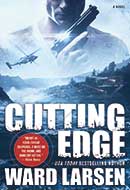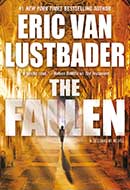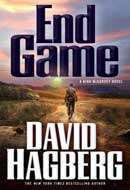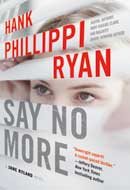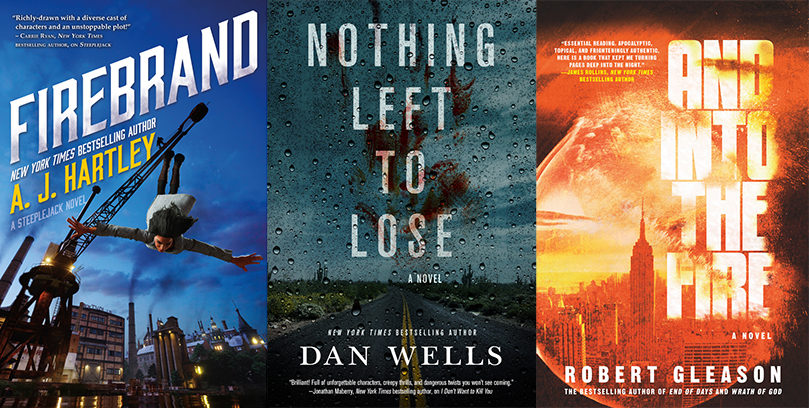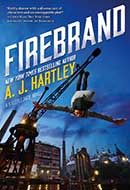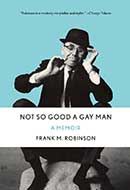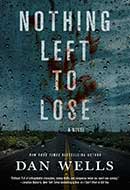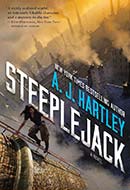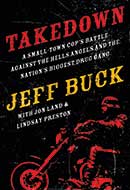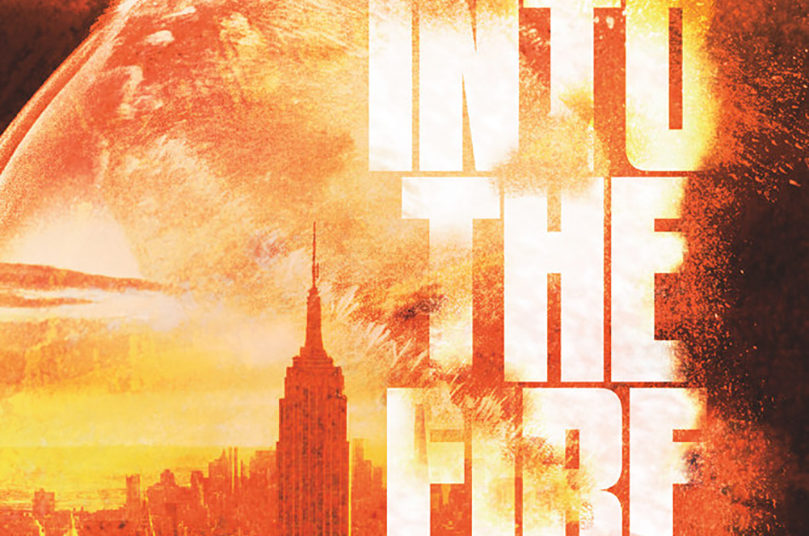opens in a new window opens in a new window
opens in a new window opens in a new window
opens in a new window opens in a new window
opens in a new window opens in a new window
opens in a new window opens in a new window
opens in a new window
opens in a new window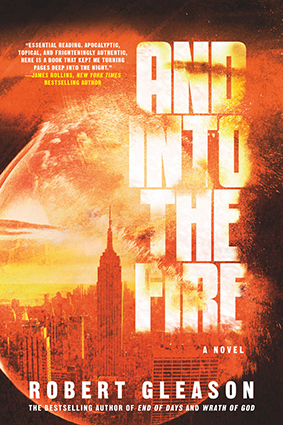
With an undeniable authority on the subject of all things nuclear, Robert Gleason brings readers’ worst fears surrounding nuclear terrorism to life in this character-driven, page-turning thriller, And Into the Fire.
After allying itself with Pakistan’s intelligence services and notorious terrorist group, the Tehrik-e-Taliban-Pakistan (TTP), ISIS is ready to achieve its ultimate dream: Forcing the US into a clash of civilizations in the Mideast. The best way to accomplish this mission is to acquire three Pakistani nukes—then set them off in three US cities.
The head of the CIA’s Pakistan desk, Elena Moreno, and an intrepid journalist, Jules Meredith, are on their trail. Unfortunately, a powerful Saudi ambassador is blackmailing a corrupt American president, and now both men will do anything to stop these two women—to the point of having them killed. All the while, a notorious Pakistani terrorist, who twenty years ago was Elena’s college lover, is leading a highly skilled, highly trained terrorist team into the US. They are armed with three Hiroshima-style nukes and are hell-bent on incinerating the three American cities.
Can the two women stop them? The clock is ticking.
opens in a new windowAnd Into the Fire will become available June 6th. Please enjoy this excerpt.
1
If the wretched of earth wish finer apparel, they should work harder.
Prince Shaiq ibn Ishaq
Shaiq ibn Ishaq—Saudi Arabia’s ambassador to the United States—entered the office of Lieutenant General Jari ibn Hamza. As head of Pakistan’s Inter-Services Intelligence (ISI), the general was a man of simple tastes, stringent self-abnegation, and dogged devotion to Allah and country. In keeping with the general’s strict Wahhabist upbringing, the walls were devoid of mirrors, artwork, even Islamic icons. Nor in the general’s office would music of any kind ever be heard. Even Jari’s decor reflected this moral severity—nothing but dark wood, black leather, and polished brass.
Moral severity was not a trait Shaiq aspired to, and the general always annoyed him. In fact, self-sacrifice did not even exist in Shaiq’s lexicon. His was a world of sumptuous opulence and unstinting pleasure.
Still, men like Jari had their uses, and Shaiq allowed him a small, patronizing smile.
Coming out from behind his massive mahogany desk, Jari looked at the ambassador and nodded.
“Alhamdulillah,” he said simply. Praise be to Allah.
“Ashokrulillah,” Shaiq responded quietly, quickly. Thanks to Allah.
Seating Shaiq on a padded leather armchair, the general took the leather couch next to him. One of his assistants immediately brought them a silver coffee service and placed it on the mahogany coffee table between the two men.
A man of great power and even greater wealth, Shaiq was accustomed to servile obsequiousness. The general, on the other hand, had never even felt deference toward him, let alone adulation, and he had never made an attempt to hide his feelings. Among other things, the ambassador was, once again, late—almost forty-five minutes late. Shaiq never arrived at scheduled meetings on time, and Jari viewed such chronic procrastination as a personal insult and an indisputable sign of weakness. The general despised weakness of any kind.
Jari was the antithesis of weak. He dressed simply—combat fatigues, black jump boots, and a black beret. He adhered to an exacting code—part Bedouin, part military, part Wahhabist tradition. His was a way of life that prized the demanding desert virtues of moderation and modesty, of hard work and harsh discipline, of commitment to Allah and rigorous self-denial. It required of him an unwavering willingness to endure danger, sacrifice, and hardship. He lived by that code and presumed one day to die by it.
He wasn’t sure what drove the wealthy Saudi sitting next to him. From Jari’s point of view, his mustache was too impeccably trimmed, his hair too elaborately coiffed. He was too handsome, too smooth, too charming for Jari to ever trust him.
Nor did the general approve of Shaiq’s attire. Most officials favored traditional Arab garb. They covered their heads with the keffiyeh and their bodies with the long, white thawb, or robe. Or in his case a military uniform. Shaiq instead wore a Brioni suit—pure Escorial jet black. Jari recognized it because once an enterprising American reporter named Julie (“Jules”) Meredith had photographed Shaiq wearing the exact same attire, then published a story in The New York Journal-World on his sartorial self-indulgence. The reporter identified each article of clothing and each piece of jewelry. She had then added up the dollar value of Shaiq’s ensemble. The total came to over $871,000. When Jules Meredith told the prince the cost of his couture, then asked if such extravagance was not unseemly in the face of so much poverty in the Islamic world, Shaiq was disdainfully defiant.
“I see myself as an exemplar of excellence, a role model for the masses, a standard of conduct and behavior, which, if they were wise, they would strive to emulate. I therefore do not hold myself to your bourgeois rules and protocols.”
“But should you flaunt your wealth so blatantly when your people live lives of such deprivation?” Jules Meredith asked.
“If the wretched of earth wish finer apparel, they should work harder.”
“Is that how you came to own a limo plated in twenty-four-karat gold? Hard work and rugged individualism?”
“I own three. Why? Is something wrong with that?”
“Isn’t such ostentation in poor taste?”
“Not at all. I deserve no less.”
The ambassador then treated the reporter to his most scintillating smile and gales of derisive laughter.
Still the article had smarted. The ambassador had once told General Jari it had inspired him to buy a plurality interest in The New York Journal-World. At the very least, he could exert some control over “that Meredith bitch,” as he had referred to her.
“If I have my way,” Shaiq had later told the general, “I’ll make her life a living hell.”
Reaching across the table for the coffee service, the suit’s silk sleeve slid up Shaiq’s wrist, and Jari glimpsed the platinum Rolex Oyster Perpetual with emerald-cut diamonds beneath the French cuff. Its gold links glittered with nine-carat diamonds.
How many child-slaves died in Sierra Leone’s bloody mines, harvesting those stones? Jari wondered. How many underage sweatshop laborers did it take to stitch those clothes?
Now Shaiq was pouring coffee out of the sterling silver carafe into a white china cup, to which he added cream and four teaspoons of sugar. Putting it to his mouth, he winced. Unable to imbibe the strong bitter Pakistani brew, he added more cream and sugar.
Jari cringed.
The man drinks his coffee like a . . . girl.
The general finally forced himself to make eye contact. He was sorry he had. The aquiline nose, regal as Caesar’s, was framed by eyes so brilliantly blue Jari wondered who his real father was—or whether the effete Shaiq wore tinted contacts. Jari doubted Shaiq was of Arab extraction. Shaiq’s skin was too pale, soft, and smooth—as unlined as a baby’s. His high, wide cheekbones were a worthy testament to the high-priced cosmetic surgeons who had labored so assiduously to make him look like a Western film star. In Jari’s eyes, Shaiq was a disgrace to Dar al-Islam.
“Cell phones?” Jari asked.
“Thanks for reminding me, old friend,” Shaiq said with a pleasant smile. “I forgot.”
Pulling out his Samsung Galaxy 5000, he was unable to find either the sim card or the battery, let alone remove them.
Jari removed the Samsung from Shaiq’s fumbling hands. He quickly unclamped and unscrewed the inside lid, then extracted the battery and sim card for him.
“As you know,” Jari said, “America’s intelligence and law enforcement agencies can activate these smartphones and convert them to microphones. They’ve been monitoring any conversation they choose, and this is definitely one they would seek to audit.”
The Saudi minister gave him a dazzlingly capped grin and three soft claps. “Bravo, mon général.”
Again, Jari inwardly cringed.
Still Shaiq was indispensable to the general’s plans. The former minister of Saudi intelligence, current ambassador to Washington, and the Saudi king’s envoy to the United States government, Shaiq was the most politically powerful man in the Kingdom, as well as its wealthiest. He was also Pakistan’s most important personal ally and its most loyal fundraiser. In the United States he was just as formidable. He owned half The New York Journal-World—the most widely read and prestigious newspaper on the face of the earth, in print and on the Internet—and large pieces of two major cable news networks. His critics complained he’d bought off and silenced the American news media.
Those were the only reasons Jari tolerated him. He had the cash and the clout Jari needed so critically.
“You want to know what progress we’ve made?” Jari asked, knowing exactly why Shaiq called him in.
“Precisely so.”
“I will not give you the exact details, but Operation Flaming Sword is about to begin.”
Shaiq nodded.
“Our commanders have chosen their teams, and they are in place.”
“And you are absolutely sure this is necessary?”
“Your profits continue to fall, no? The West has come to rely on their own shale oil, on their natural gas deposits, on their wind and solar farms. Without their hydrocarbon imports, your country faces ruin. Since you and your royal family are our preeminent benefactors, we face ruin. They spurn us all with impunity; we cannot allow this to continue.”
“Still, Operation Flaming Sword carries with it unprecedented risks,” Shaiq noted.
“The permanent loss of the West’s petrodollars poses even graver dangers to us both,” the general said. “Do you have any idea what would happen if you continue down this road to ruin, if word of your ultimate insolvency becomes known? Our people will rise up en masse. Your cities will burn, your streets run red with blood. We must make the Americans curse the day they started their renewable energy industries. They think global warming scorches their cities and farmlands?” Jari said, rising angrily in his chair. “We will show them real heat, and they will, once again, turn to us.”
“Just as they did after we flattened their World Trade Centers,” Shaiq said, “and they sent their armies into Iraq.”
“Our people will cringe and cower in terror at the threat of U.S. nukes incinerating Mecca, Medina, and Riyadh,” the general said.
“And we will send the price of oil into the stratosphere,” Shaiq said.
“They will once again view our help in the War on Terror as indispensable,” the general said, “and some to us with their checkbooks open.”
Jari’s desk phone buzzed. He took the call, nodded once, and said, “Good.”
“I gather your new financial installment has arrived,” Shaiq said.
The general smiled and pressed a button. A dark bearded man in a white floor-sweeping thawb and a matching keffiyeh headdress entered. Four bearded men, similarly dressed, followed him. They each dragged behind them eight enormous steamer trunks—made of teak and steel and equipped with rear wheels—by leather handles. The trunks’ edges were trimmed with an eighteen-karat-gold plate, inlaid with diamonds and pearls. Their gold-plated, titanium latches were secured with matching titanium padlocks.
As was typical of Shaiq, he had brought the money to Jari in the most expensive packaging money could buy.
“As requested,” Shaiq said, giving him a polite bow, “you now have $500 million in used, unmarked, pressure-packed, nonsequential $100 bills. No wire transfers or bank withdrawals large enough to attract undue attention.” He placed the keys on the general’s desk. “The quintessence of black money.”
“Alhamdulillah.” All praise and thanks to Allah.
Gazing fondly at the trunk, Shaiq smiled. “Do you know the English poet Milton? He has a line: ‘It is better to reign in hell than to serve in heaven.’ Do you think it will come to that? For us?”
“If it does,” the general said, “then inshallah.” Allah’s will.
Looking suddenly at his watch, Shaiq said, “General, as much as I love our little conversations, I must hurry to my plane, I’m expected in New York.”
“The City of . . . Sodom,” Jari said with a faint smile.
“For business,” Shaiq said, “not pleasure. The New York Journal-World is having a revenue-raising ball, and it certainly needs some additional revenue. Since I am their second-largest stockholder, I must attend.”
As Shaiq left, the general leaned back in his desk chair and stretched long and hard. He wondered if the rumors he’d heard about Shaiq were true. Underage girls? Sadomasochistic tristes? Erotic asphyxiation? Who knew? But did the Brioni-suited degenerate really understand what he was getting into? No, the general had not conveyed to him the full violent scope of the nuclear attacks, nor would Shaiq have understood their inevitable apocalyptic consequences. Shaiq saw the nuclear strikes as a series of acts so unimaginably catastrophic that no one would dare counterattack. An all-out nuclear war would be so bad for business it would ultimately be unthinkable, and the West would eventually cave. The nations of earth would demand that the nuclear horror come to an end.
In Jari’s worldview, however, nothing “came to an end”—not until one side or the other was obliterated. The age-old blood-mandate to retaliate totally was sacred and absolute: it could only be satisfied by the utter destruction of the foe—in this case the infidel foe.
Shaiq, Jari believed, could not grasp any of this, nor could he ever fully embrace the coming clash of civilizations. The man’s entire being was sheltered and held together by filthy lucre. Avarice defined him. He was nothing but money, the illusion of power and empty words.
Well, in this case, Jari thought to himself, Shaiq’s talk would soon be translated into action. . . .
Shaiq, you’ll get a bigger bang for your buck than you ever imagined.
For the first time that evening, the general’s smile was sincere.
Copyright © 2017 by Robert Gleason
Order Your Copy
opens in a new window opens in a new window
opens in a new window opens in a new window
opens in a new window opens in a new window
opens in a new window opens in a new window
opens in a new window opens in a new window
opens in a new window
 It has a dark past—one in which a number of humans were killed. A past that caused it to christen itself “Murderbot”. But it has only vague memories of the massacre that spawned that title, and it wants to know more. Teaming up with a Research Transport vessel named ART (you don’t want to know what the “A” stands for), Murderbot heads to the mining facility where it went rogue.
It has a dark past—one in which a number of humans were killed. A past that caused it to christen itself “Murderbot”. But it has only vague memories of the massacre that spawned that title, and it wants to know more. Teaming up with a Research Transport vessel named ART (you don’t want to know what the “A” stands for), Murderbot heads to the mining facility where it went rogue. Orly’s Konig’s Carousel Beach is a powerful novel that untangles the secrets of love, heartbreak, and misunderstandings between three generations of women.
Orly’s Konig’s Carousel Beach is a powerful novel that untangles the secrets of love, heartbreak, and misunderstandings between three generations of women.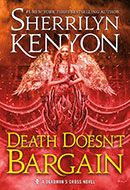 The Deadmen are back…
The Deadmen are back…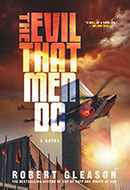 Income inequality and the offshore hoarding of illicit black funds have reached such extremes that the earth’s democracies are in peril. The oligarchs are taking over. The People worldwide, however, are rising up, and they demand that the UN seize and redistribute all that illegal filthy lucre. But it will not be easy. The world’s oligarchs will not go gentle.
Income inequality and the offshore hoarding of illicit black funds have reached such extremes that the earth’s democracies are in peril. The oligarchs are taking over. The People worldwide, however, are rising up, and they demand that the UN seize and redistribute all that illegal filthy lucre. But it will not be easy. The world’s oligarchs will not go gentle.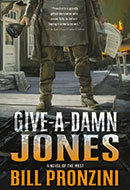 Not all the folks who roamed the Old West were cowhands, rustlers, or cardsharps. And they certainly weren’t all heroes.
Not all the folks who roamed the Old West were cowhands, rustlers, or cardsharps. And they certainly weren’t all heroes.
